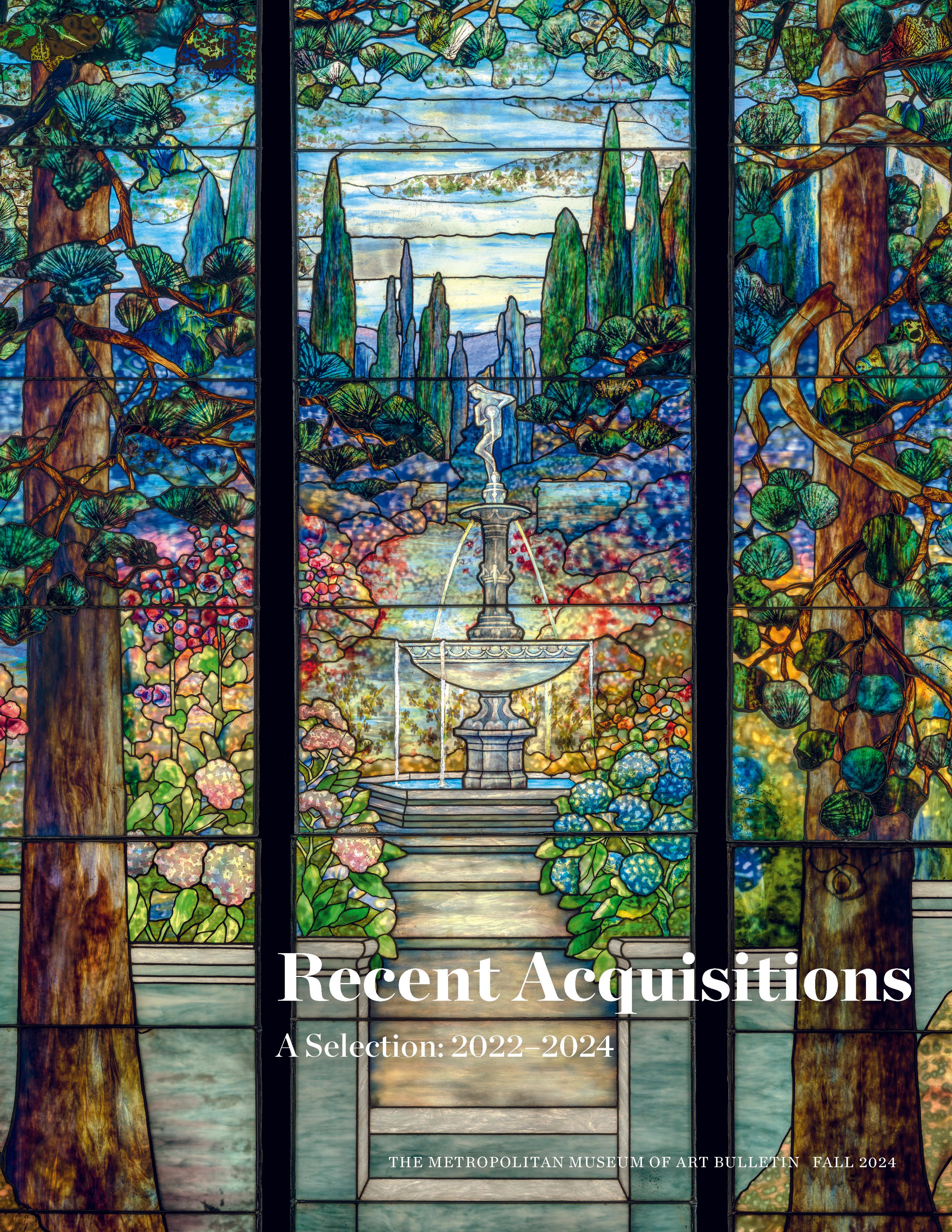The Guide (Éclaireur)
Télémaque, whose family was involved in the Black consciousness movement in Haiti, encountered Surrealism when he left Haiti at the age of twenty to study at the Art Students League in New York. Rejecting the endemic racism of the U.S., he went to Paris in 1961, where he befriended André Breton and a younger generation of Surrealists. While the artist later developed a style of representational painting associated with Pop and the leftist politics of the Narrative Figuration group, Télémaque found in Surrealism a means to negotiate his creative identity in relation to his Caribbean roots.
Éclaireur was made at that significant point in his career. Against a brilliant blue background that suggests sea and sky, organic forms undergo metamorphosis; some seem to stretch and twist with gaping black holes like wounds or mouths filled with teeth. The painting’s shifting imagery may suggest the artist’s articulation of his new artistic path: its French title Éclaireur can mean guide or scout, as in something that helps inform in advance.
Éclaireur was made at that significant point in his career. Against a brilliant blue background that suggests sea and sky, organic forms undergo metamorphosis; some seem to stretch and twist with gaping black holes like wounds or mouths filled with teeth. The painting’s shifting imagery may suggest the artist’s articulation of his new artistic path: its French title Éclaireur can mean guide or scout, as in something that helps inform in advance.
Artwork Details
- Title: The Guide (Éclaireur)
- Artist: Hervé Télémaque (Haitian, Port-au-Prince 1937–2022 Paris)
- Date: 1962
- Medium: Oil on canvas
- Dimensions: 51 3/16 × 76 3/4 in. (130 × 195 cm)
- Classification: Paintings
- Credit Line: Purchase, Bequest of Florene M. Schoenborn, by exchange, 2023
- Object Number: 2023.136
- Rights and Reproduction: © 2025 Artists Rights Society (ARS), New York
- Curatorial Department: Modern and Contemporary Art
More Artwork
Research Resources
The Met provides unparalleled resources for research and welcomes an international community of students and scholars. The Met's Open Access API is where creators and researchers can connect to the The Met collection. Open Access data and public domain images are available for unrestricted commercial and noncommercial use without permission or fee.
To request images under copyright and other restrictions, please use this Image Request form.
Feedback
We continue to research and examine historical and cultural context for objects in The Met collection. If you have comments or questions about this object record, please contact us using the form below. The Museum looks forward to receiving your comments.
